The common marshmallow is a fascinating plant that not only looks beautiful, but also has healing properties. You can find out how to use and plant the medicinal marshmallow here.
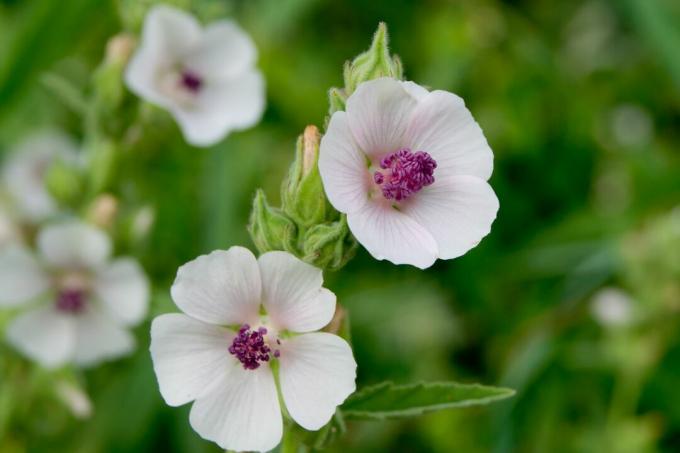
The real marshmallow (Althaea officinalis) not only beautifies the garden with its flowers, but also serves as a bee pasture. As if that weren't enough, the mallow plant is also an edible medicinal plant. We will show you how to care for the common marshmallow in the garden and how to use the parts of the plant.
contents
- True marshmallow: flowering time, origin and properties
-
Sowing, location and Co. for the common marshmallow
- Sowing the common marshmallow
- Eibisch: location
- The right substrate
- True marshmallow: care
- Althaea officinalis: effect and use as a medicinal plant
True marshmallow: flowering time, origin and properties
The real marshmallow (Althaea officinalis) belongs to the mallow family (Malvaceae) and is widespread throughout Central Europe. Its numerous names such as white mallow, swamp mallow, velvet poplar, medicinal root, althee and medicinal marshmallow reveal a lot about the beautiful medicinal plant. The upright growing perennial can be up to 150 cm high and has showy white or pink flowers, which are also enjoyed by insects. The flowering period extends from July to September.
Althaea officinalis grows naturally in moist or salty locations. Since the habitat of the common marshmallow is increasingly being lost, the plant is now considered endangered and must therefore not be collected in nature.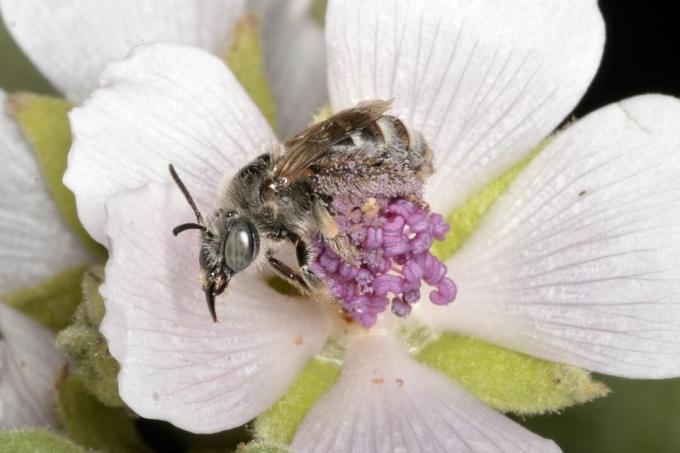
The anti-inflammatory mucilage, which can be found mainly in the roots, but also in the leaves, help against coughs, respiratory problems and throat infections. The roots of Althaea officinalis They also have a sweet taste and were previously used to make marshmallows by mixing the roots with egg whites and sugar. The name of the popular sweet comes from the swamp mallow (English: marsh mallow) return. In addition to the roots, other parts of the plant such as flowers and leaves are also edible and can be used for cooking.
Sowing, location and Co. for the common marshmallow
In the garden, the common marshmallow does not only look great - since all parts of the plant are edible and the flowers also attract insects, it is an extremely useful garden plant.
Sowing the common marshmallow
The white mallow is one of the cold germs. That means it needs cold temperatures to germinate. If the common marshmallow is to be spread by sowing, it is best sown directly outdoors between January and March when the temperatures are still low. Sowing in a pot standing outside is also possible without any problems. As soon as it becomes warmer in the long term, the seeds will germinate.

Eibisch: location
The common marshmallow prefers it to be moist and nutrient-rich, which is why locations on the banks are particularly suitable. In order to achieve a stately height, a warm and sunny place, preferably sheltered from the wind, is sufficient. The location should also be deep, as the white mallow forms a long tap root. Althaea officinalis is a solitary shrub and grows clumpy, which is why a planting distance of 90 cm should be maintained.
Tip: If you would like to buy and plant a grown velvet poplar, spring is the best time to do this, when no more frosts are expected from May onwards.
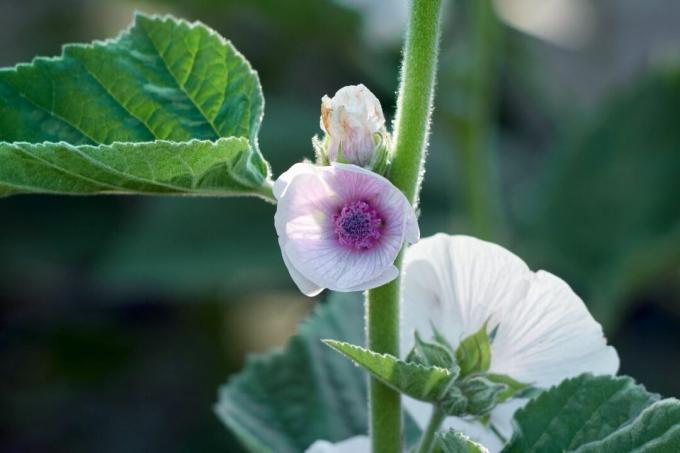
The right substrate
Above all, the soil should be rich in nutrients, moist and permeable and not allow waterlogging. A humus-rich substrate can also promote growth. The white mallow also thrives on salty soils and, overall, does not place particularly high demands on the soil.
The real marshmallow can also be kept in a pot. Above all, a voluminous planter with a capacity of at least 20 liters is required for this. A drainage layer made of pebbles or potsherds makes sense to avoid waterlogging. High-quality potting soil, such as ours, is suitable as a substrate Plantura organic universal soilthat provides all the important nutrients and promotes healthy soil life. Our earth is peat-free and therefore particularly sustainable and environmentally friendly. If you add a little expanded clay to the substrate, the structural stability and thus the durability of the earth can be increased.
True marshmallow: care
The common marshmallow is a quite frugal garden plant and does not need a lot of care. An adequate water supply and occasional fertilization as well as two prunings per year are sufficient for the white mallow.
Althaea officinalis likes it fresh to moist, so needs water regularly. It is important here that no water stagnation forms. In dry seasons, it is best to water in the morning or in the evening, but not in the midday heat.
As long as the common marshmallow grows in nutrient-rich soil, it does not need additional fertilization. However, if the leaves turn yellow or fall off, an additional nitrogen supply is necessary. For example, ours is suitable for this Plantura organic universal fertilizer, which supplies the plant with nitrogen, but also phosphorus, potassium and trace elements in the long term and thus promotes the healthy growth of roots, leaves and flowers. A biological fertilizer is particularly advisable for plants that are also to be used for consumption. Alternatively, a small amount of compost every year is a good fertilizer for the white mallow.
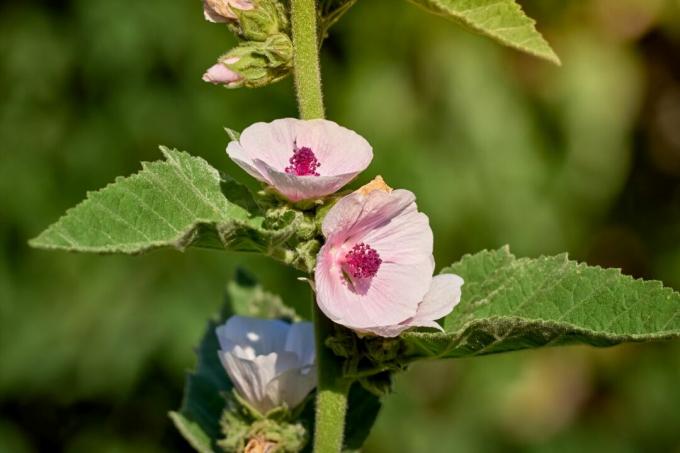
The perennial, hardy perennial should first be cut back slightly in autumn. The shoots are shortened by about a third. Restraint is required because it is needed for wintering Althaea officinalis their intact stems. In spring, the parts of the plant damaged by frost can then be removed. The growth habit can be influenced: If you shorten the side shoots, you get tall, upright growth. In order to achieve a bushy growth, cut off the upper shoots.
Tip: The common marshmallow can easily be propagated by dividing or sowing.
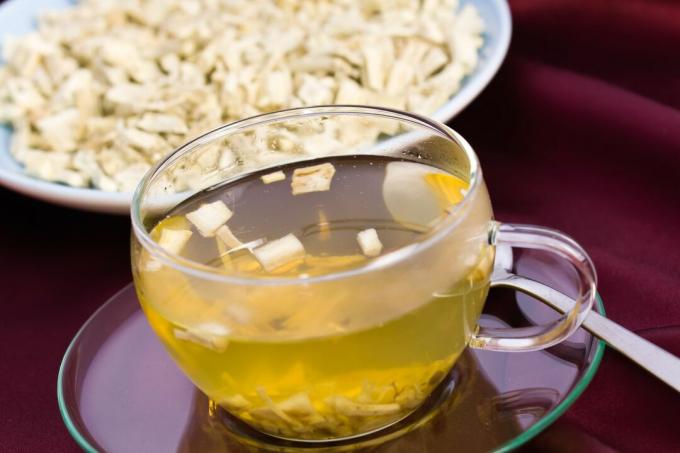
Althaea officinalis: effect and use as a medicinal plant
The common marshmallow is primarily known as a medicinal plant. Roots, leaves and flowers are edible. In the case of throat problems, the mucilage, which is mainly found in the roots and leaves, is used and usually prepared as tea. They put a kind of protective layer on the attacked mucous membranes and in this way can relieve pain and inhibit inflammation. Real marshmallow tea is prepared as follows: The roots and leaves, fresh or dried, are cut into small pieces and soaked in cold water. The whole thing is then left to steep for one to two hours. Then the water can be poured off through a sieve and heated. In order not to impair the healing effect, the water should not boil under any circumstances. If you are not going to use the roots immediately after harvesting, they will need to be dried carefully to prevent mold from forming. Since the common marshmallow is under nature protection, no wild plants may be harvested.
Tip: In addition to roots and leaves, the flowers of the white mallow are also edible and can be mixed into a salad, for example.
Also the Honorary award is considered a medicinal plant and can be used in the kitchen. With us you will find out everything you need to know about planting in the garden.



